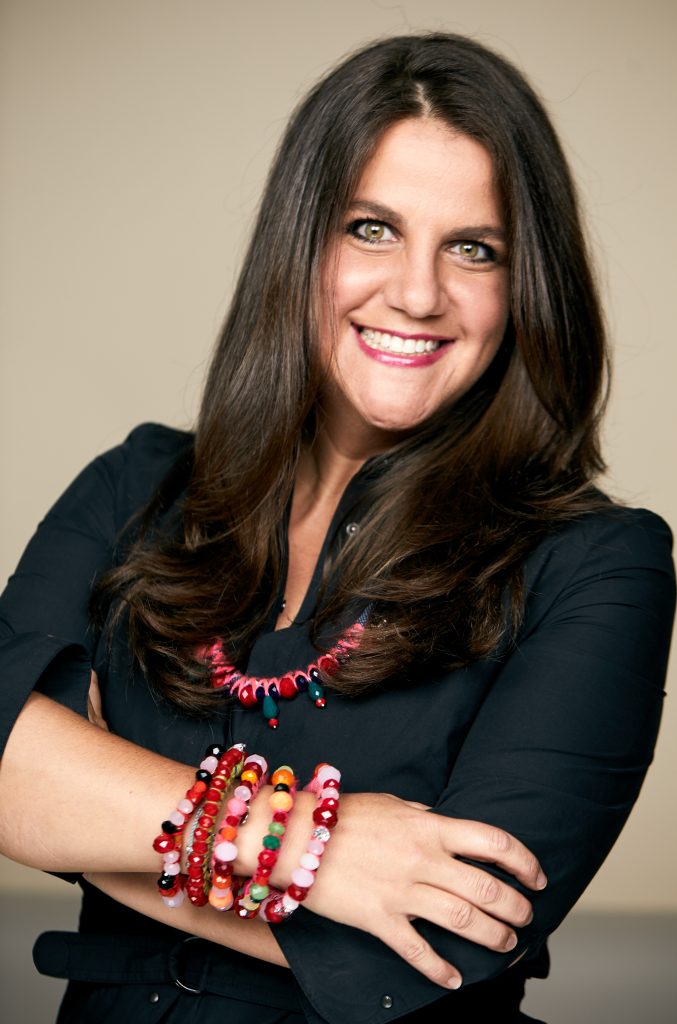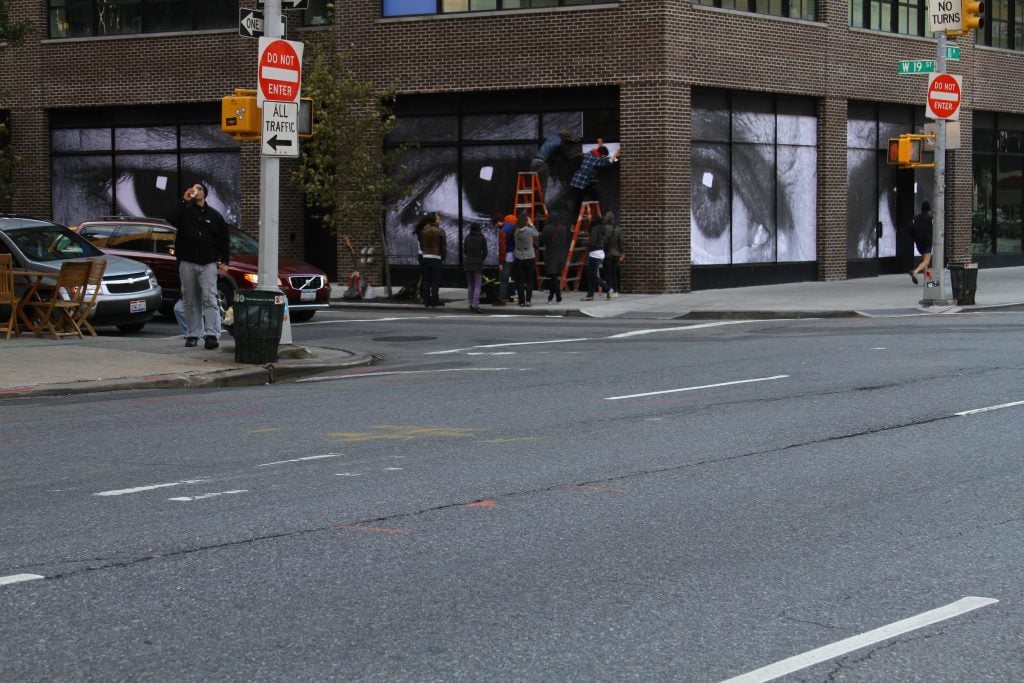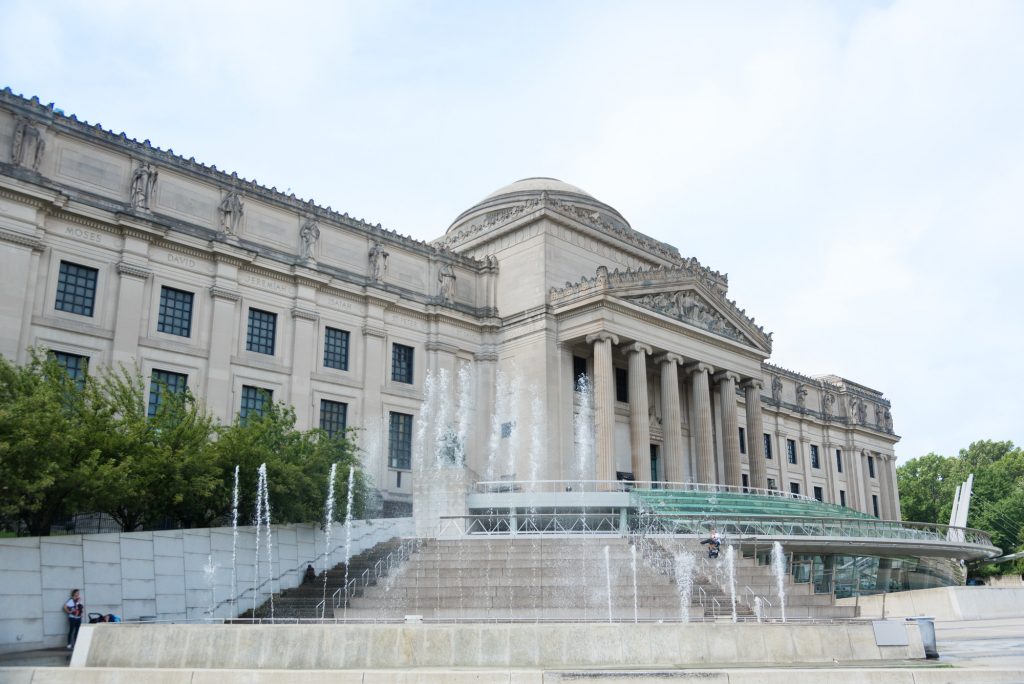Museums & Institutions
Museums Have Artists in Residence. The Brooklyn Museum Asks, Why Not Entrepreneurs in Residence?
Rachel Shechtman has been tapped to build the framework for the museum's new Entrepreneur in Residence program.

Rachel Shechtman has been tapped to build the framework for the museum's new Entrepreneur in Residence program.

Annikka Olsen

Last year, the Brooklyn Museum enlisted retail mogul Rachel Shechtman for their inaugural two-year Entrepreneur in Residence (EIR) initiative. With a mission of fostering experimentation and entrepreneurialism within the museum as well as tapping expertise from professionals outside the art world, the theme of the first EIR program is “The Museum of the Future, Today.” Engaging with departments across the museum, Shechtman will cultivate and facilitate innovation in areas such as visitor experience, retail, and programming, as well as create a sustainable framework for future EIR participants.
Shechtman, a fourth-generation entrepreneur, is already well known in the realm of retail as the founder of Story, a pioneering concept store that was a landmark in West Chelsea for six years. Inspired by editorial magazines, the Story boutique changed its theme—which ranged from “Home for the Holidays” to “Made in America”—and its products every four to six weeks, creating an ever-rotating, always-new customer experience. From the start, Shechtman championed experimentation and collaboration—most notably with numerous big-name artists. One of the earliest collaborations saw artist JR take over the store’s windows, installing one of his signature photo murals. Shechtman sold Story to retail giant Macy’s in 2018, and the store has now opened 36 locations across 15 states. Shechtman worked as a brand experience officer with Macy’s through the summer of 2020. Among her many accolades, Shechtman has been named one of Fast Company‘s 100 Most Creative People in the Business and Fortune‘s and Crain‘s 40 under 40.
We recently spoke with Shechtman to learn more about how the Entrepreneur in Residence program came about and the parallels she’s found between the worlds of art and retail.

Work of artist JR being installed at Story in Chelsea. Photo: Marc Azoulay.
As the very first Entrepreneur in Residence at the Brooklyn Museum, can you tell us what that means and how it came about? Did they approach you, or did you approach them?
A bit of both. Much of my career has been about a “living lab,” doing things first and different, emphasizing experimentation. And I’ve known the museum’s director, Anne Pasternak, for years, and she knew Story and was a customer. I got to spend more time with her during the pandemic because the Brooklyn Museum was working on evolving their retail strategy. She asked if I wanted to join some calls and help, and I shared with her this concept of an entrepreneur in residence (EIR), which is very common in the venture-capital world. My company was acquired by Macy’s and I’d left my job at the beginning of the pandemic, and I told Anne I was thinking of doing an EIR at an entertainment company, that I really loved this idea of exploring new models of talent.
I have this theory that if consumer behavior transcends different industries, then why shouldn’t talent? Right now, often you’ll have someone who has, say, worked in the museum world for 40 years, and another person who has worked in retail for 15 years—but on any given day, a consumer interacts with the entertainment industry and cultural institutions, as well as consumer products. Why isn’t there more fluidity for talent? I was sharing this theory with Anne, and I woke up on a Saturday morning and there was an email from her saying she’d thought about what I’d said, and that though many museums have artists in residence, no museum has an entrepreneur in residence, and that I should do one with the museum. I’ve done a lot of research and digging, and I’m 99.9 percent sure we are the first museum to ever have an EIR. There are design residencies, research residencies, and artist residencies, but the idea here is: How do we create strategic and meaningful access for cultural institutions to people with relevant skill sets from outside the industry?
When you look at my career, doing immersive retail experiences, that’s very relevant to consumer behavior these days—and not just to retail, but to visitor experience. Anne proposed I do the residency and we would figure out what the residency is at the same time. I get to build the plane and fly it at the same time. I like doing it first if for no other reason than it’s a blank piece of paper. It’s not going to be easy. But it’s cool because you’re going into uncharted waters.
Are there any specific skill sets or experiences that you think translate particularly well to being an EIR for a museum?
I think the word entrepreneur is an interesting one, because when you’re running your own business, you have your fingers in lots of different areas—you’re doing the marketing, finance, janitorial. You’re all of it. And that cross-functional awareness is important, especially as an outsider wanting to have impact. I’ve always said that companies and organizations are often like the United Nations without a translator, in that every department has their own language. When I take away what the industry expertise is, it’s about mindset, and someone who can translate across different kinds of functions and languages within a museum.

The Brooklyn Museum. Photo: Jonathan Dorado.
Did you come into this role with a specific approach or outline of how or what you would undertake?
The beauty of coming into something that’s never existed before is you have a nice long period to listen and learn. I’ll be the first to say, I don’t know what I don’t know. And I will be the first to say, I do not come from the art world. I’ve worked and collaborated with artists over the years in many ways through Story, but all through a commercial context, not as a nonprofit cultural institution. I see my first six to 12 months focused on really being an active listener. That’s not to say I’m not rolling up my sleeves and getting my hands dirty, but ultimately, it’s crucial to co-author the program with my colleagues. But, to give you a more concrete answer, in addition to building what the EIR program is, there are three “buckets” in terms of the theme “Museum of the Future, Today”: enhancing and impacting the visitor experience at the museum; collaborating with the retail team on new ideas around retail; and working on initiatives and ideas connected to our 200th anniversary.
As you’ve mentioned, this is functionally the prototype for the museum’s EIR initiative. Is your approach affected by thinking about the framework you’ll be leaving behind?
I worked with Macy’s for over two years, which came to an end because of the pandemic. If you put Macy’s next to the Brooklyn Museum, they look nothing alike on the outside: It’s a for-profit, billion-dollar retail brand and a nonprofit cultural institution. It’s like comparing a convertible and a truck. But under the hood, they both have an engine, they have exhaust pipes, they have electrical wiring…that has been one of my biggest “aha” moments. They’re actually quite similar in a sense, because they are institutions and have processes that have been around for a long time. They have a mix of talent, staffers who have been there for varying amounts of time. I say this because when you look at transformation or innovation, for example, how they show up might look different, but how you get there isn’t that different. There are so many similarities. I would argue it’s mindset more than skill set.
And the hope is, as I understand, that the EIR program will be essentially self-sustaining?
Yes, because if you think about it, it’s self-selecting for who the entrepreneur is. Two years from now the objective might be centered on fresh thinking around climate and sustainability, for which I would be 1,000 percent unqualified. Or it might be about Web3, for which I would be 2,000 percent unqualified. And that’s really what the goal is. There’s value in whatever work I do while I’m there, but for me, the impact of this role is that it will still be a meaningful part of the organization 10 years from now. That, to me, is as much if not more of the “deliverable” here than whatever work I’m also doing. I would love nothing more than for the program, regardless of theme, to create newness—new thinking, new expertise, new ideas brought into the talent ecosystem of the museum.
You have been at the museum now for a few months. In that time, has anything really surprised you?
The thing that surprised me more than anything else was how not different it felt. The subject matter and the application are different, but when you think about the visitor to a museum, it’s like a visitor going to Broadway theater, it’s like a visitor going to a retail store, it’s like a visitor going to a restaurant. Consumers live across so many different industries and ecosystems. It’s interesting how certain questions that I would ask myself in my retail world are relevant in the museum world—like, how am I going to get someone’s attention? How do I want to get them to come back more? How am I going to keep their attention? How do I get them to stay longer? How do we differentiate ourselves? None of those things are unique to a museum. Now they need to be made unique in respect to museums.
Do you have any specific advice for young entrepreneurs or entrepreneurs just starting out?
Always ask the question—the worst that can happen is someone says no. I used to say, “I love a good cold call.” I don’t think people answer their phone anymore, but I think it is really good to cold call. Whether you want to have a meeting, learn from someone, or do something, always ask the question.
More Trending Stories:
Whoops! A Clumsy Art Fair Visitor Shattered a $42,000 Jeff Koons Balloon Dog Sculpture in Miami